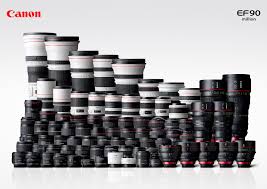My main camera is a Canon EOS 6D with a variety of
The Canon EOS 6D came out five years ago so I’ve been kind of itching for an upgrade. If I’m honest with myself, the original Canon 6D still gets the job done. I still manage to produce great landscapes and still life images from this camera. The megapixel count is plenty big to offer sofa sized prints on my portfolio with Fine Art America and is plenty big for licensing to the publishing industry for book cover artwork.
The Canon 6D is built like a tank and has weathered all kinds of extremes from 115 degree desert heat in Arizona and Nevada to freezing cold wet conditions from Vermont to Iceland.
Even after 100,000+ shutter snaps, it still keeps on chugging along. Anyone looking for an inexpensive entry into full frame should consider getting the original Canon 6D for less than $1,000. Or the Canon EOS 6D II for a few hundred more.
The Canon EOS 6D Mark II offers some improvements over the original. Slightly higher megapixels, more focus points and an LCD screen that flips out. But ultimately the upgrades haven’t been enough to get me to upgrade. I keep holding out a major upgrade, especially if Canon releases something with better dynamic range.
A few months ago Canon released the EOS-R mirror-less camera with a lot of fanfare. This new mirror-less camera is smaller, boasts a lot more megapixels, all kinds of interesting digital features and has a new lens mount which allows Canon to build exciting new lenses, some of which have never existed before.
But it was soon apparent after the initial marketing launch in Maui, Hawaii, that this would be the entry level camera in what will become a whole new line up of Canon EOS-R camera.
The EOS-R camera can be used with existing Canon lenses using adapters but there is also native lenses built for this camera. A few are currently on the market with a few more announce that are coming out soon.
Canon is obviously set a future path for its company around this mirror-less concept, but the initial offering is not enough for professionals to drop their Canon 5D Mark IVs for the new system at this point.
Initial reviewers online like to moan about the EOS-R, a $2,299 camera not being good enough for them to trade in their $3,000+ professional level camera but they are missing the point.
The Canon EOS-R is simply the first in a future line up of EOS-R cameras and lenses. This camera and the first lenses out for this system are simply a way to introduce new camera buyers to the system and to re-coop some of the research and development money.
Creating a whole new camera system requires a lot of investment and a company needs to get something on the marketplace fund future models.
No doubt the path Canon is laying out is a staggered release of new lenses over the coming year and then dropping a higher end version of the Canon EOS-R for the professional market.
Rumors have it that Canon is developing a 75 mega-pixel mirror-less EOS-R camera! This kind of rumor certainly will give a lot of current Canon 5D owners to hold out for the promise of a professional level mirror-less camera with an amazing new sensor.
